The Commemorative Medals 記念章 (기념장)
Imperial 50th Birthday Commemorative Medal 高宗 聖壽 50周年 記念章 (고종 성수 50주년 기념장)
This medal commemorates the 50th birthday of Emperor Kwangmu and was issued in Sept., 1901. The obverse shows the Emperor’s Crown. The reverse has the inscription ‘Great Korean Empire, Great Korean Emperor, Imperial Age 50 Years Felicitations, Commemorative Silver Medal, Kwangmu 5, 9th Month, 7th Day.’ According to Korean sources, it only comes in silver.
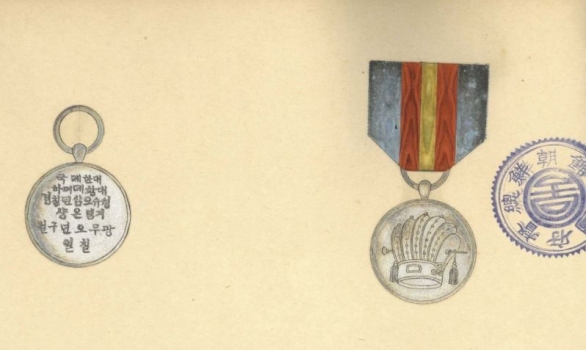
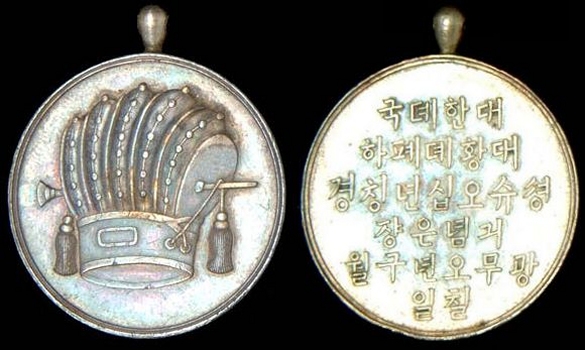
Forty Year Reign Commemorative Medal 高宗 望六旬·登極 40周年 記念章 (고종 망육순·등극 40주년 기념장)
The Forty-Year Reign Commemorative Medal was issued in silver and bronze and is dated Kwangmu 6th year, 10th month, 18th day (October 18, 1902). The obverse shows the Injeongjieon 仁政殿 (인정전 Hall of Benevolent Administration) in Changdeok Palace 昌德宮 (창덕궁), Seoul. It is the main hall of the Palace, where the emperor held official national events, such as receiving foreign envoys and receiving condolences from his subjects. It was designated as Korea’s National Treasure No. 225 on January 8, 1985. The reverse has the inscription ‘Imperial Korea, His Majesty the Emperor, In Commemoration of the Forty-Year Reign, And to Pray for Sixty Additional Years of His Majesty’s Life, Commemorative Silver Medal, Kwangmu 5, 10th Month, 18th Day.’
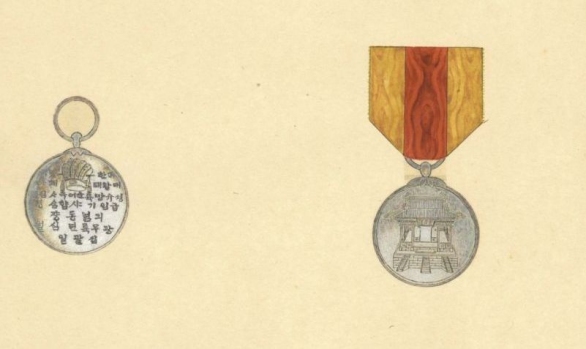
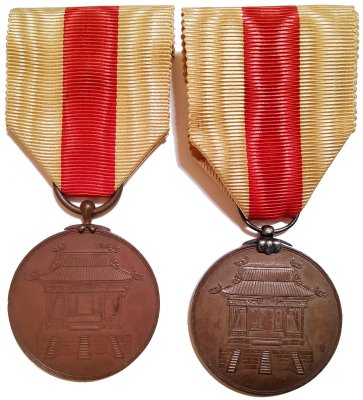
Crown Prince Wedding Commemorative Medal 皇太子 嘉禮 記念章 (황태자 가례 기념장)
This medal commemorates Prince Sunjong’s (later Emperor Yung Hi) wedding on January 24, 1907. The obverse has two doves facing each other. The reverse has the inscription ‘Great Korean Empire, His Highness the Crown Prince, Marriage Ceremony, Commemorative Medal, Kwang Mu 11, 1st Month 24th Day.’ According to Korean sources, it only comes in silver and bronze.
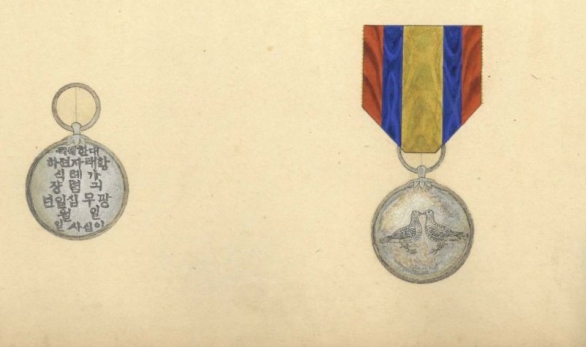
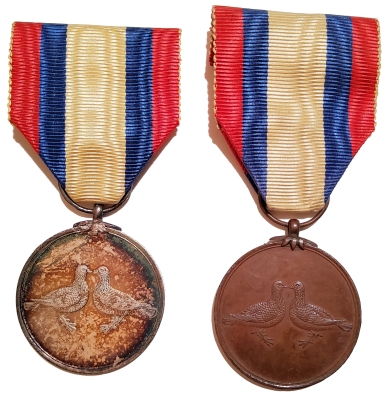
Enthronement Commemorative Medal純宗 皇帝 卽位 記念章 (순종 황제 즉위 기념장)
This medal commemorates Emperor Yung Hui’s enthronement on August 27, 1907. The obverse has the Korean Imperial helmet (Pickelhaube) on a plum blossom, and an outer border of Taeguk symbols and scroll work. The reverse has the inscription ‘Great Korean Empire, Great Korean Emperor, Enthronement Ceremony, Commemorative Medal, Yung hi 1, August 27.’ These are generally found in silver or bronze, however at least one example has been found in gold.1 Because of this example in gold, it is reasonable to assume that, all the standard 5 commemorative medals were issued in gold for members of the immediate royal family.
According to the Korean Cultural Heritage Administration 문화재청, there are no surviving Korean Dynasty pickelhaubes.
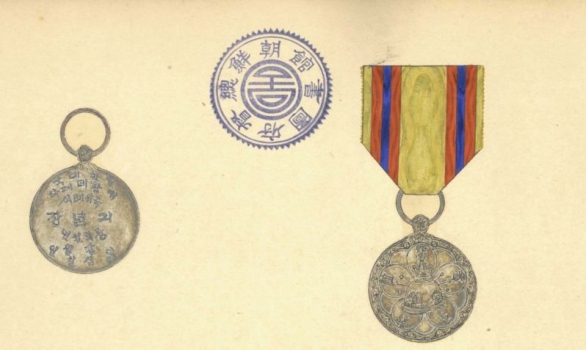

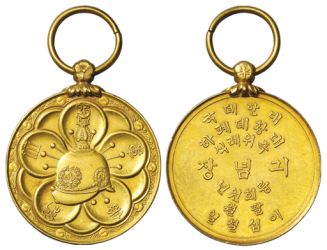
Imperial Tour Commemorative Medal 純宗 南西巡幸 記念章 (순종 남서순행 기념장)
The medal was established in 1909 to commemorate the Imperial Tours. It is 33 mm in diameter, made of silver, and has the Emperors’ personal flag with Plum blossom on the obverse. The Emperor was from the Yi family, and the word Yi translates as plum. The reverse inscription translates as “Great Korean Empire / Great Korean Emperor / Trip to the South and West Commemorative Medal / Yung Hi 3rd year (국뎨한대 / 하폐뎨황대 / 장념긔?슌셔남 / 년삼희륭)”. (The question mark indicates a Korean character that is no longer used, and cannot be printed.) The light red ribbon is 37 mm wide, watered, and has two 7 mm pale yellow edge stripes. According to Korean sources, it only comes in silver.
As a consequence of the establishment of the Japanese Protectorate in 1905, there were widespread disturbances throughout the Korean Peninsula. The Japanese did not have the police and military forces in place, that would be necessary to handle any major civil disturbance. In 1907, imperial edicts were issued on July 19th, Sept. 18th and on Dec. 13th, asking the populace to stop all forms of civil disobedience. In a Sept. 1, 1908 edict, amnesty was offered to any insurgent who surrendered before the end of October. To counteract rumors that the Emperor Sunjong was being held captive by the Japanese, an Imperial Rescript was issued on January 4, 1909, to announce a nationwide imperial tour. Two tours were actually conducted in January and February, to the South and West of the country. The Imperial Rescript stated that the Emperor wanted to personally inspect the conditions prevailing among the people; to acquire intimate knowledge of the situation, and at the same time to announce the new era which awaits the nation under competent guidance from Japan toward reforms and progress. The first tour to the South of the country took 13 days, while the second tour to the (North) West took 8 days.
The Japanese and their Korean collaborators made a gigantic public relations event out of the tours. There were parades, fireworks, and the newly created Imperial marching band performed the recently composed national anthem, Aegukka 애국가, at each stop. Gifts were bestowed on cities, towns, schools. Awards were handed out to filial sons and virtuous widows. Tours were conducted at the local historical monuments through which the Emperor and the Resident General passed. All the dignitaries appeared in formal Western ceremonial/court attire 문관대례복 (文官大禮服) as a show of modernity. The Japanese and Korean flags were prominently displayed. Resident General Ito Hirobumi made 8 speeches, informing the crowds that it was his duty to guide the Korean Emperor and his government toward an enlightened administration, for the preservation of peace in the East and thus ultimately for the peace of the world at large. The Southern tour went mostly as planned, but the tour to the North-West did not fare so well. The Japanese authorities got their first taste of Korean recalcitrance in Kaesong. Local police forces had been instructed to mobilize schoolchildren and to have them wave the national flags of Korea and Japan at the welcoming parades and at school visits. The faculty of a Christian mission school refused to instruct its students to waive the Japanese flag. The brouhaha over the flag issue spread, emboldening Korean nationalists. Almost overnight, throughout the northwest region, displayed Japanese Hinomaru flags (日の丸, ‘Circle of the Sun’) were seized, torn apart, stomped upon, or burned. 2
There are references which state that the tours were in the South and North. In actuality, the tours were to the South and North-West.
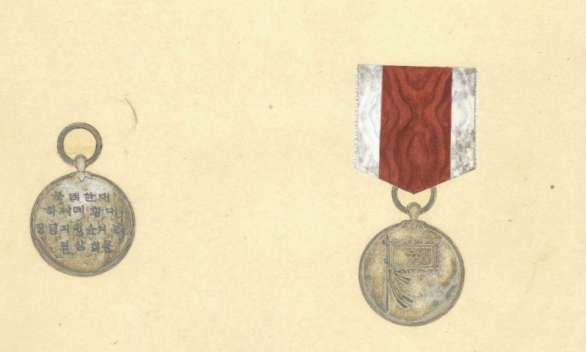
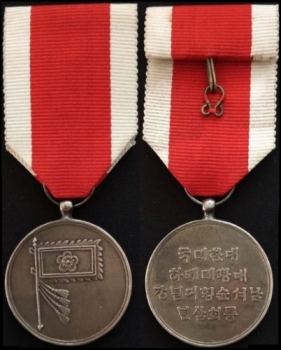
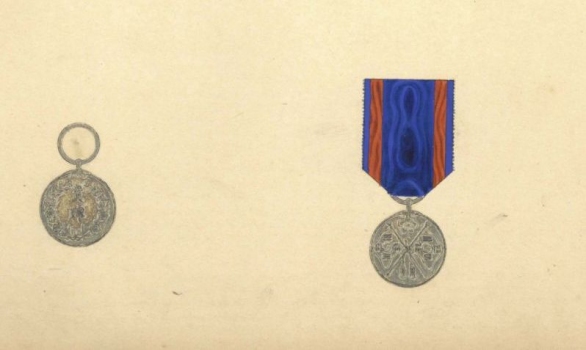
Medal of Merit 賞牌 記念章 (상패 기념장)
Not shown in the Peterson Monograph, but it is called a Korean Empire Commemorative Medal by Korean collectors. I have no information on this medal. The inscription on the reverse 賞牌 (상패) is commonly translated as “Plaque” or “Prize Medal”, but is more accurately translated as “Merit Medal”. In this case, it is being used to as a Medal of Merit. It is listed in the book “Korean Empire Era, Decoration System” 대한제국시대 훈장제도.3 “Link to blog post and picture source”4
There are some indications that these medals were awarded during Emperor Sunjong’s Imperial Tours of 1909, but I have not been able to confirm it.

Japan’s Crown Prince Trip to Korea Commemorative Medal (Duplicated information from my “Imperial Tour Medal” page)
On October 16th, 1907, the Japanese Battleship Katori (香取 (戦艦)) entered the Korean port of Inchon. On board was Japan’s Crown Prince Yoshihito (嘉仁), who was to become the future Emperor Taisho (大正天皇). He had come for a 5-day visit to Korea, staying until Oct. 20th. On March 27, 1909, almost 1.5 years after the visit, the Japanese government established a medal to commemorate the trip to Korea. In a reciprocal gesture, the Korean government established a medal to commemorate the trip.
I have no good/factual information on the Korean Medal for the Japanese Crown Prince’s Trip to Korea. There are a few Korean websites which show or at least refer to the medal, but none of them have any factual information and give reference sources. There was a palace fire recorded on Nov. 10, 1917 in which valuable items, described as “Honors (勳記), Medals (勳章), Insignia (徽章), and Commemorative Plaques (記念章)” were destroyed. This could possibly explain the lack of records if they had been stored with the medals, but I have no information of substance. There is no information about this medal in the Annals of Emperor Sunjong. 5
The Japanese medal is exceedingly rare, but the Korean Medal is far rarer. One unsubstantiated source states that there were 27 made in silver and 10 in platinum 백금.6 The only thing I can offer is a picture of the medal and a translation of the text on the reverse side. The top line is 隆熙元年十月 Yunghui 1st year 10 month (October 1907) 융희원년십월 and the three columns are 大日本帝國皇太子殿下御來韓紀念 Commemorating the visit of the Imperial Prince of Japan to Korea 대일본제국황태자전하어내한기념. Link to the blog post and picture source 7
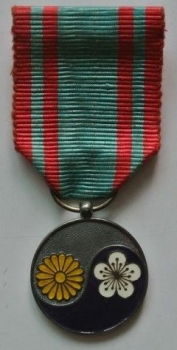
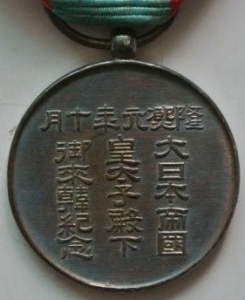
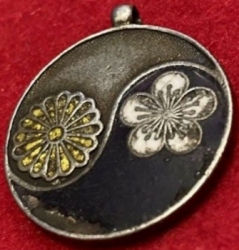
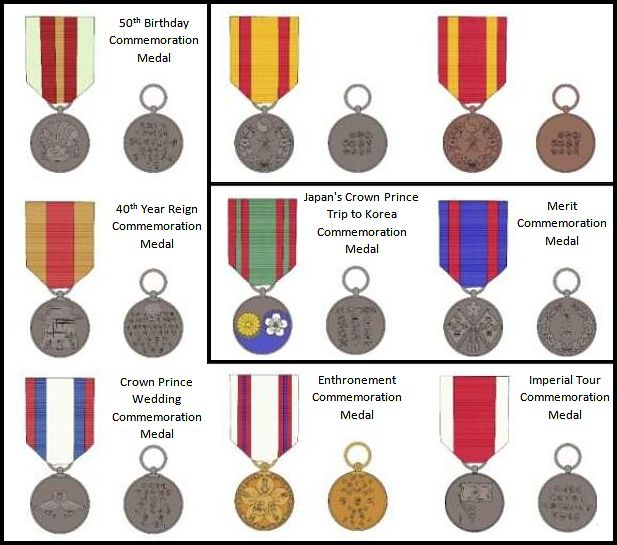
Make no mistake about the last two entries above. In searching the Korean Internet, I have run into several blogs which talk about “other two” Commemorative Medals. Korean medal collectors differentiate them by the text used in the inscription. The standard five commemorative medals utilize Korean text while the “other two” are in traditional Chinese characters, hence the term.
To the right is a picture that I got off the Korean internet. I have modified it and present it here because it not only shows the standard 5 commemorative medals, the “other two” medals shown above, but also purports two show two more medals that are completely unknown to me.8 Unfortunately, I have not been able to get better pictures of these last two medals and consequently cannot give a translation of the text. I also found one blog source which states that these last two medals were never produced. They appear to be identical, with one in silver and the other in bronze. Probably the most important feature of this picture is the identification of the ribbon colors.
Award Documents
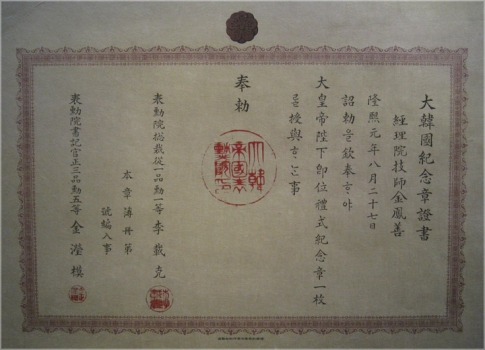
Footnotes:
- Lot #426, Hwadong Auction #20, 9-17-2011. Price realized was ₩23,000,000 (Approx. $22,220 U.S. at that time) + Buyer’s Premium. Weight 34.4g, Size 33.6×52.3×2.7 mm, condition XF.
- For a more exhaustive treatment of the tours, see “Politics and Pageantry in Protectorate Korea (1905-10): The Imperial Progresses of Sunjong” by Christine Kim (2009).
- Yi Kang-chil 이강칠 (李康七), op. cit., p. 81
- The pictures used here are from a 2013 Korean blog post. Unfortunately, because I do not have a Korean Citizen Identification Card, I cannot communicate with the author. If you can communicate with the author, please have him get in touch with me.
- Both the Annals of Emperor Kwangmu and those of Emperor Sunjong are suspect because they were compiled by the Japanese, who had their agenda when it came to accurately recording Korean history.
- In modern Korean 백금 is used for platinum, while the term 화이트골드 is used for white gold. I don’t know if that was also the common usage in the early 1900s.
- The pictures used here are from a 2016 Korean blog post. Unfortunately, because I do not have a Korean Citizen Identification Card, I cannot communicate with the author. If you can communicate with the author, please have him get in touch with me.
- Modifications were limited to moving the locations of the medals on the page, adding text and creating borders for organizational purposes.
